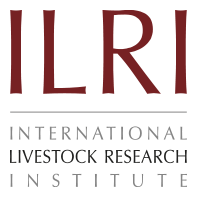Tuli
Origin and distribution: The name Amabowe was formerly applied to cattle of Ngwato Setswana type in the southwest corner of Zimbabwe, from Tuli to Plum tree. Disasters of the 1896 rinderpest reduced the number of these cattle and much of the rest were crossed with Afrikaner. However, remnant herds of this breed were then collected in the Tuli area, hence, the breed has been recognized as Tuli. It is distributed in several countries in Africa, especially in the neighbouring Botswana and South Africa; it has also been used in forming the synthetic breed called the Akouma in Gabon; it has been exported from Zimbabwe to Gabon, Australia, Australia, United States and Canada (Rege and Tawah 1999; Mpofu 2000b).
Physical characteristics: Tuli is a large sized, African sanga breed. It is heavy boned with long wide spreading horns and long strong legs; the colours are mostly red, red-and-white and golden brown. The Tuli have been selected in favour of their golden-brown colour and polledness, and against shyness and poor breeding.
Peculiarity: The breed is known for its above average fertility, calving ease and good maternal ability and beef productivity.
Breed status: Although the estimated total number of the Tuli cattle in the national commercial herds is about 10 000 for Zimbabwe and 2 339 for South Africa (DAD-IS 2005), no information is available on the number of Tuli cattle under smallholder management and for other countries. In general, the attempts made to improve and conserve the breed in different countries have kept it from being endangered. In 1945, the Tuli Breeding Station in Zimbabwe was established. There are 7 stud farms in Zimbabwe and excess bulls from these farms are used in many commercial farms. The Tuli breed society of Zimbabwe was formed in 1961. The South African Tuli Breed Society is closely linked to the Namibian and Zimbabwean ones, which together started joint genetic evaluation of the Tuli breed. Breed societies for the Tuli were established also in Australia and the United States (Mpofu, 2001) [CS 1.2 by Mpofu].It is also conserved using semen preservation (DAD-IS 2005).
Utility: The Tuli cattle are good for beef. Weight at birth, at 90 days old, at weaning, at the age of 18 months and 5½ years was 31.9 kg, 105.8 kg, 189.7 kg, 284.1 kg and 411.1 kg, respectively (Ward et al. 1983). The body weight of Tuli at 5½ years of age was greater than those of Mashona, Nkone and Afrikaner. Data from DAD-IS (2005) indicate that Tuli cattle have average daily gain of 1.375 kg and a feed conversion ratio of 7.24:1. Similarly, calves sired by Tuli cattle were reported to have greater birth and weaning weights as compared to those sired by Afrikaner and Aberdeen Angus. As high as 750 kg average adult live weight for males, and 400 kg females was reported (DAD-IS 2005).
The age at first calving and calving intervals are reported as 36 months and 407 days, respectively (DAD-IS 2005).
Table 1. Body weights of Tuli cattle at different ages compared with other breeds
Source: Ward et al. (1983).
Trail et al. (1977) compared Tuli cattle with Afrikaner and Tswana of Southern Africa. Tuli was shown to be the most productive because of the exceptionally high reproductive rate (85% vs. 67 and 79%) and lower mortality rate (7% vs. 8% and 12%). This was later supported by Ward et al. (1983) who reported that the pre- and post-natal calf wastage is the lowest in the case of Tuli (6 & 1.5%) as compared to those of Mashona (9 & 2.6%), Afrikaner (16.7% & 1.6%) and Nkone (8.1% & 3.2%).
References
DAD-IS, 2005: http://www.fao.org/dad-is
DAGRIS, accessed in Sept 2005: http://dagris.ilri.cgiar.org
Rege J.E.O. and Tawah C.L. 1999. The state of African cattle genetic resources II. Geographical distributions, characteristics and uses of present-day breeds and strains.FAO/UNEP Animal Genetic Resources Information Bulletin.26:1-25.
Trail J.C.M. Buck N.G. Light D. Rennie T.W. Rutherford A. Miller M. Pratchet D. and Capper B.S. 1977. Productivity of Afrikaner, Tswana, Tuli and crossbred beef cattle in Botswana. Animal Production. 24(1):57-62.
Ward H.K. and Tawonezvi H.P.R. 1983. Production traits of Mashona, Nkone and Tuli cattle and of some beef breeds exotic to Zimbabwe. Animal Genetic Resources in Africa. OAU/STRC/IBAR publication. Nairobi, Kenya. Second OAU Expert Committee Meeting on Animal Genetic Resources in Africa. 24-28 November 1983: Bulawayo, Zimbabwe. pp. 86-95.
Related Literature
Epstein, H., 1971. The origin of the domestic animals of Africa Volume I. Africana Publishing Corporation. New York. London. Munich. pp. 454-457.
Mason I.L. and Maule J.P. 1960. The indigenous livestock of eastern and Southern Africa. Common wealth Agricultural Bureaux. Farnham Royal, Bucks England. p. 36.
Maule J.P. 1990. The cattle of the tropics. Centre for Tropical Veterinary Medicine, University of Edinburgh, Great Britain. 225 pp.
Related websites
http://www.briggsranchgenetics.com/tulihistory.htm
http://www.cattlepages.com/states.asp?breed=Tuli
http://www.cattle-today.com/Tuli.htm
http://www.ads.uga.edu/annrpt/1996/96_012.htm
http://www.nal.usda.gov/ttic/tektran/data/000009/
53/0000095340.html
http://www.users.bigpond.com/mort.hudson/zimtuli.htm
http://www.carrollshelby.com/tuli.htm
http://overton.tamu.edu/news/tulisale.html
http://www.brahman.org/growth3.html
http://agnews.tamu.edu/stories/ANSC/african.htm
http://www.fao.org/biotech/logs/C6/210301.htm
http://www.twnside.org.sg/title/rampant.htm
http://www.etcgroup.org/documents/com_biopiracy.pdf
http://uvalde.tamu.edu/pdf/bullmat.pdf
http://www.marc.usda.gov/cattle/gpe/gpe_pr17.html
http://www.csiro.au/news/mediarel/mr1994/pr94127.txt
http://stephenville.tamu.edu/~shammack/newsletter/
072597.htm
http://www.ansci.umn.edu/beef/beefupdates/bcmu42.pdf
http://www.arc.agric.za/institutes/aii/main/divisions/blup/
blup.htm
http://www.its.csiro.au/news/mediarel/mr1993/pr9363.txt
http://www.e-class.com/site/Animals_Livestock_/Breeding_/indexf.html
http://www.rrojasdatabank.org/trade1.htm
http://www.ulg.ac.be/fmv/bbb/publica.htm
http://fireant.tamu.edu/research/finalreports/herring.pdf
http://www.cattleweb.net/Livestock.phtml
http://ds.dial.pipex.com/hemans/book/ch2a.htm
http://www.cattle.ca/CanFax/breeds.htm
http://abri.une.edu.au/bplan.htm
http://home.intekom.com/bosstec/cattle.htm
http://www.unigen.org/other.htm
http://www.ucd.ie/ascience/html/pages/academic/
dmachugh/downloads/Hanotte_et_al.(2000).pdf
http://www.genestar.com.au/content/page.asp?page=personnel
http://www.nda.agric.za/docs/Digest2000/Digest11.htm






